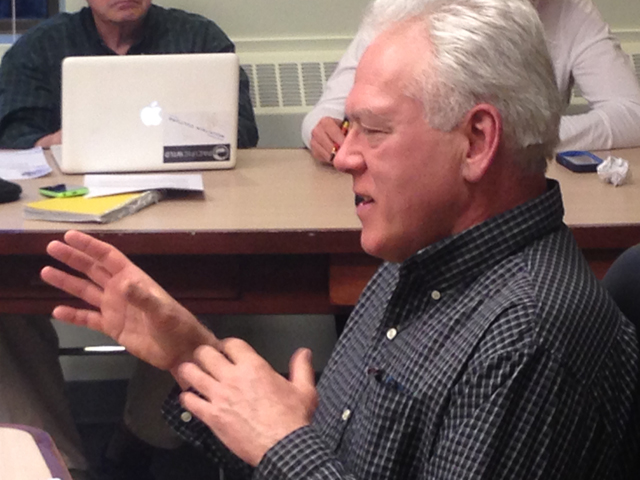Curlers looks for Council support to make building a 'year-round' multi-use community facility
The city’s curling club is looking for permission to put in a concrete floor at the 40-year-old city owned building in order to raise the bar on making the Curling Centre a year-round multi-use community facility.
The presence of a sand floor beneath the ice surface prohibits full utilization of the facility, said Nelson Curling Club president Gordon Weiss told city council Monday night. The sand floor with cooling pipes is not suitable for any other use except curling, he added.
“Hence, the building sits dormant for half of the year,” he told council.
“We believe that being able to use the building all year round for both curling and non-curling events will benefit the community at large, assist in addressing increasing costs in operations of the club, and ensure viability and sustainability of the sport within our community.”
Weiss said the curling club — that has maintained a presence in the community since 1898 — is asking the City of Nelson for a resolution in council to allow them to replace the existing floor of the curling rink playing surface with a concrete floor, raising money for the project through grants and donations.
The idea of a concrete floor has been discussed at the club level for over 10 years, but finances were always a deterring factor.
A concrete floor of approximately 11,000 square feet offers tremendous potential for hosting large scale events such as banquets, dances, concerts, film production, indoor markets, grad parties, weddings, curling events and other community or commercial events, said Weiss.
He pointed to a 2006 banquet hall feasibility study done by the Nelson Italian Society that demonstrated a need within the community for such a venue. The curling centre is around 40 years old, and is currently used five months of the year.
For 65 years the Nelson Midsummer Bonspiel generated millions of dollars in recreation tourism and related economic spinoffs in attracting hundreds of curlers and families for the weeklong event, as well as contributing significantly to the club’s annual operating budget.
When the event ended in 2008, the club sought out other ways to increase revenue to meet operational expenses. As a result, the club has been marketed successfully and is beginning to be used for non-curling events, but only for part of the year.
Weiss noted that the club offers universal accessibility, a commercial kitchen, licenced lounge, above-average sound system and a large, open, indoor space.
“We can build on these assets in a cost effective, carbon reduced way by meeting community needs with the proposed improvements,” said Weiss. “We want to earn money and pay our way to put events into that building, so we don’t have our hand out to the city when something needs to be repaired.”
The project would include replacing the existing sand floor with concrete, removing the existing cooling pipes and some of the old concrete in place, and replacing the cooling pipes along with a concrete slab at the proper elevation.
The next project would be switching to a geothermal mechanical system, said Weiss.
The concrete floor request was referred to city staff for inclusion on the upcoming city council agenda and discussion on the matter.
Bank of ideas
Monica Carpendale and Geneviève Gagnon with the Kootenai Art Therapy Institute presented to council about an art project called “The Bank of Ideas: Towards an Economy of Caring.”
The Bank of Ideas is a community art project exploring concepts of self-care and community wellbeing.
From November 2015 to February 2016, the project toured various venues in Nelson, inviting community members to participate via pop-up, drop-in workshops. In total, 14 workshops were offered in diverse settings, from the downtown streets of Nelson to a fundraiser for the Women’s Centre, with other stops at cafés, the public library and community and arts events.
The project’s tours have led to the creation of a collection of local ideas.
At each workshop, supplies were provided along with a list of prompts to guide participants in generating ideas; people were then invited to share their ideas on small index cards. In total, 200 cards were entered into the Bank of Ideas collection. Each card was photocopied and reproduced so that others could browse and select a few cards to take with them.
Beyond sharing the project’s impacts and findings with city council, Gagnon asked for council’s support to display the collection, either temporarily or permanently in an outdoor public space. The matter was referred back to staff to introduce at an upcoming council meeting.


























